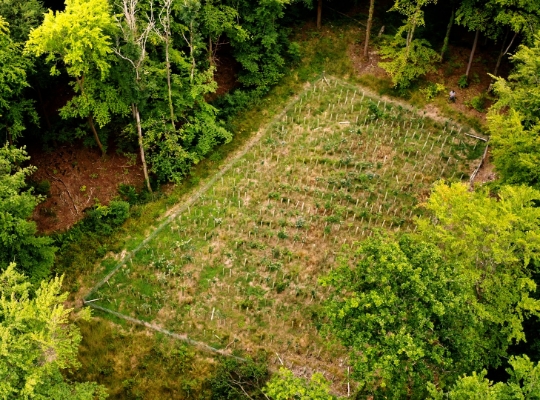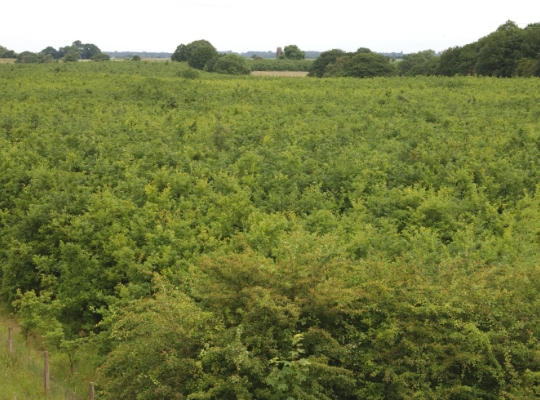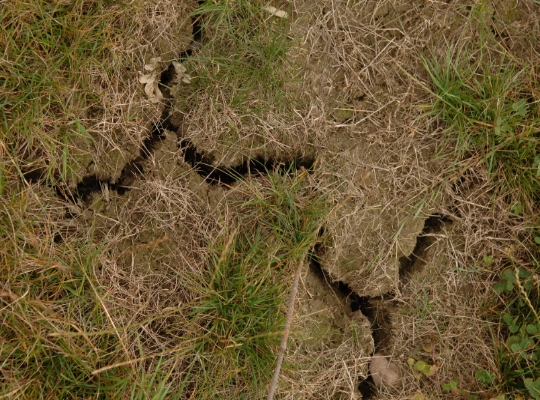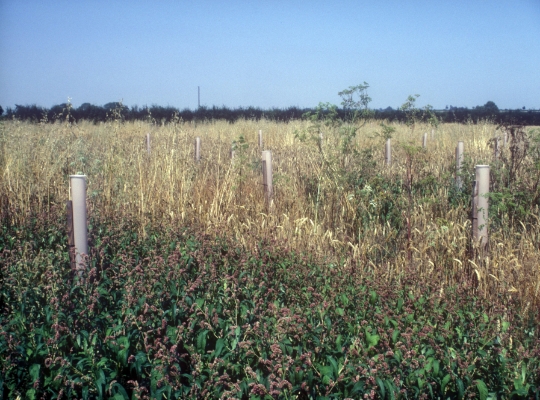Establishment practices can support climate change adaptation, such as direct seeding, controlling weeds and invasive species, choice of planting stock, and watering and irrigation.
Consideration of planting season in relation to risks such as flooding or drought can increase survival. Planned management interventions and scheduled operations provide opportunities for climate change adaptation to new and existing stands.
Successful establishment of nursery-grown bare-root stock trees requires lifting and planting when trees are dormant. Milder winters will tend to limit this, and instead, cell-grown planting stock may be more suitable as the climate changes. They can be lifted and planted outside the periods recommended for bare-root plants and may have better survival rates in drier conditions.


Direct seeding is sowing tree seed by hand or machine directly into a seedbed. It can be a low-cost method of woodland creation and it creates more opportunity for natural selection of seedlings for location conditions. The technique also has great potential for creating large woodlands linking existing areas of ancient semi-natural woodland.
However, success can be hampered by small mammals and it is not appropriate for species that produce little seed or seed infrequently.
Planting practices may need to change given milder winters and increasing risk of losses with drier spring and summer conditions. Research trials suggest direct seeding can be a viable and efficient establishment method for:
a) Woodland on lowland agricultural land.
b) Changing some upland restock sites from conifer to broadleaf (birch, rowan and alder) on less fertile, freely draining sites.
Compared to planting, note that direct seeding requires more technical expertise in ground and seed preparation and requires a large volume of seed, together with an appropriate silvicultural regime.
For further information see the Forestry Commission Practice Guide Creating new broadleaved woodland by direct seeding.
Encouraging natural regeneration can aid adaptation through natural selection, conserving genetic variation, and lowering the risk of wind damage. Seedling establishment can be encouraged either under existing or recent tree cover, and in areas where there has not been recent woodland.
Further details are available on the natural regeneration adaptation measures page.
The changing climate is likely to affect the proliferation of weeds as there is generally greater need for weed control in warmer climates. Weed germination starts earlier in the season and growing seasons for both trees and weeds are likely to be longer, so the timing of herbicide applications and their frequency may need to be reconsidered.
With drier spring and summer conditions forecast in many locations due to climate change, the risk of losing newly planted stock will only increase unless adequate water and suitable ground conditions are in place.
Irrigation in the field and nurseries may become increasingly necessary although only feasible at small scale. Alternatively, a change in the planting calendar may reduce drought risk.
For information on species suitability and drought tolerance for land regeneration e.g. brownfield, see the Forest Research Best Practice Guidance Note for Land Regeneration: Drought-tolerant tree species for land regeneration.


All adaptation measures have management implications, from changing to continuous cover systems, or changing the thinning intensity of a growing stand to reduce competition for water; these are described in detail on the adaptation measures pages.
Additional forest management adaptation measures include:
The following risks may be reduced if the adaptation measure is applied appropriately: